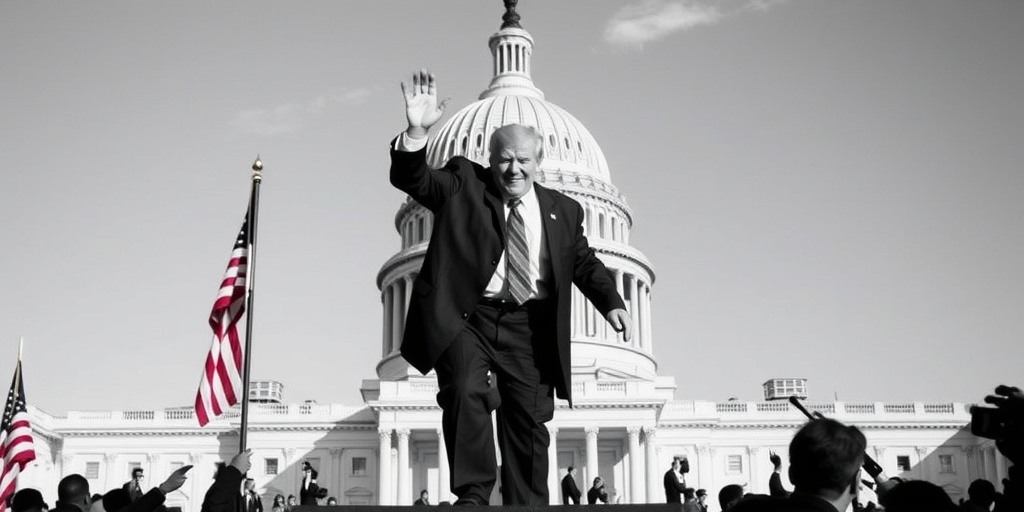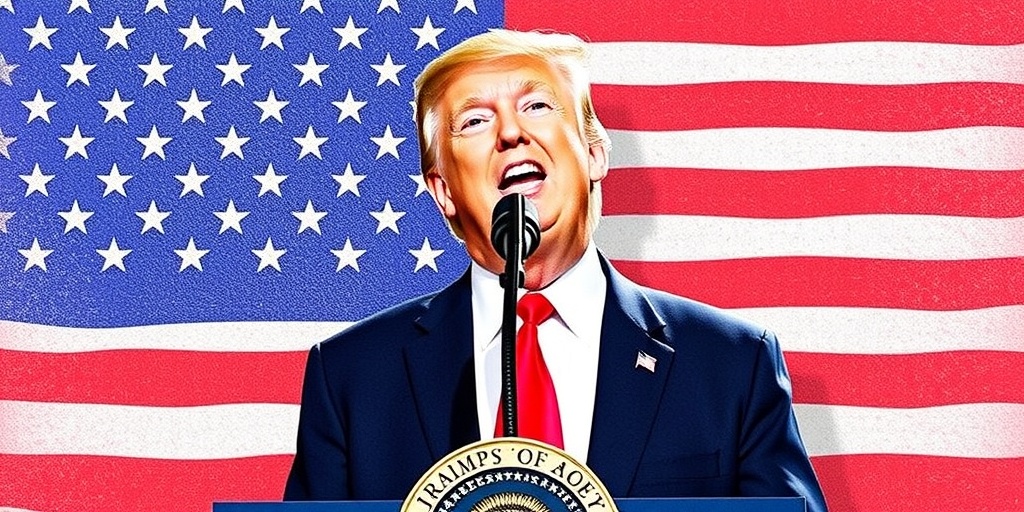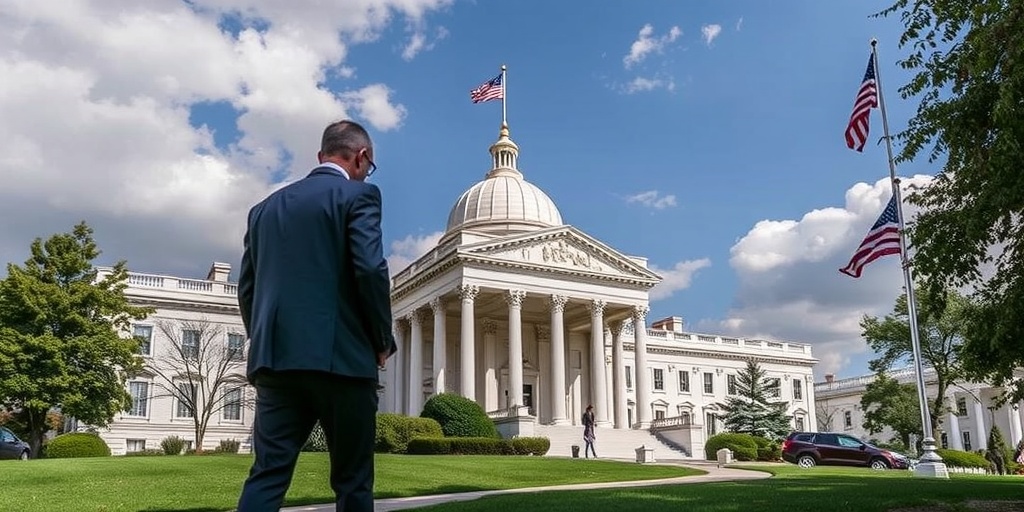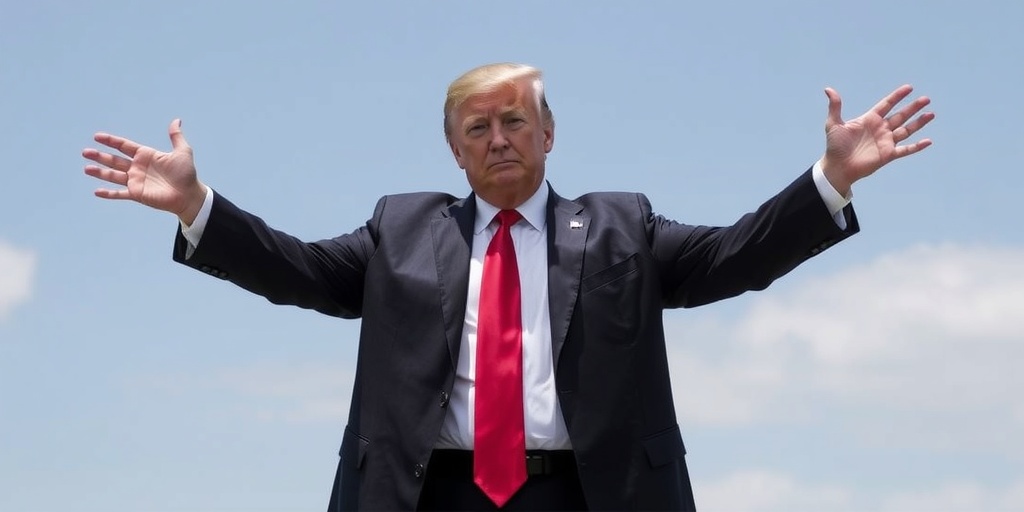Now Reading: G.O.P. Budget Passed After Conservative Rebellion Fails
-
01
G.O.P. Budget Passed After Conservative Rebellion Fails
G.O.P. Budget Passed After Conservative Rebellion Fails

House Passes Republican Budget Blueprint Amid Internal Strife
In a closely contested vote on Thursday, the House of Representatives adopted a Republican budget framework aimed at significant cuts to taxes and federal spending. This decision came after a tense standoff among hard-line conservatives who raised concerns about the potential increase in national debt, challenging the progress of President Trump’s domestic agenda.
The approval of this budget blueprint, which passed with a narrow margin of 216 to 214, marked a pivotal win for Republican leaders and President Trump. It equips them to advance major tax legislation that promises substantial cuts, primarily benefitting high earners and corporations, which will be funded by reducing expenditures on crucial federal programs. The plan is set against a backdrop of staunch Democratic opposition, with all Democrats voting against it, citing fears it could lead to damaging cuts in essential safety nets such as Medicaid.
During the floor debate, Representative Kevin Hern of Oklahoma underscored the urgency for action, asserting that passing the budget is a necessary step towards unleashing American energy production and solidifying border security, while also making tax cuts permanent for small businesses and working families. The president has characterized the forthcoming tax legislation as a “big, beautiful bill,” indicating its importance in his administration’s goals.
However, the vote was marred by an earlier revolt on Tuesday night, which highlighted the considerable divisions within the Republican Party. Speaker Mike Johnson found himself in a difficult position after holdout conservatives resisted backing the measure. To assuage their concerns, Johnson engaged in extensive discussions throughout Wednesday, attempting to convince skeptical members of the need to move forward.
Despite the challenges faced, the House’s adoption of the budget blueprint is seen as a critical step for Republican leaders. The two dissenting votes from within the party reflect the lingering apprehensions about exacerbating the national debt under the proposed framework. Democratic leaders, such as Representative Hakeem Jeffries of New York, expressed their discontent, condemning the plan as an initiative to prioritize tax breaks for the wealthy, while threatening vital services for ordinary Americans.
The fate of the budget plan hung in the balance leading up to the vote, particularly as conservative factions voiced concerns that the proposal would not yield significant spending reductions and would contravene principles that many hard-liners hold dear. The Senate’s version of the plan, which had already passed over the weekend, called for approximately $4 billion in spending cuts over the next decade. This figure is significantly lower than the House’s proposal, which outlined $2 trillion in cuts. Consequently, some conservative members feared that accepting the Senate’s version would force them into a position where they would have to settle for far lesser cuts than desired.
In a last-minute resolution, the holdouts ultimately agreed to support the budget blueprint after receiving vague assurances from Speaker Johnson and Senate Majority Leader John Thune regarding a promise to identify at least $1.5 trillion in spending cuts. Thune conveyed this desire for a sustainable fiscal approach during a Capitol news conference, highlighting an ambition among senators to align with the House’s more aggressive budgetary outline.
The struggle leading up to the vote underscored the challenging dynamics facing House Republicans as they navigate internal party divisions while attempting to fulfill President Trump’s legislative priorities. It was not only a matter of ingratiating themselves to Trump; the pressure to unify and deliver a coherent fiscal plan was palpable in the days surrounding the vote. Following a meeting that Trump held at the White House aimed at quelling dissent, he intensified public calls for GOP members to back the budget. At a fundraising dinner shortly before the vote, Trump encouraged lawmakers to envision the benefits of the plan, urging them to “close your eyes and get there” while dismissing any reluctance as mere grandstanding.
Moving forward, the reconciliation process, which Republicans intend to utilize for their budget and tax proposals to advance through Congress along party lines, necessitates that both the House and Senate adopt a consistent budget resolution. However, there remains apprehension among House conservatives regarding the Senate’s approach toward tax cuts, especially claims that extending the tax provisions implemented in 2017 would not incur any additional costs, as such an approach would maintain the existing fiscal trajectory without increasing the deficit.
The Senate’s tendency to adopt milder measures raises questions about possible conflicts in achieving the deeper spending cuts demanded by House Republicans. Although the holdouts expressed some reassurances following Thune’s assurances, how these spending restraints could be achieved remains uncertain, particularly considering that House Republicans have earmarked significant savings from the Medicaid committee. However, several Senate Republicans have publicly articulated discomfort with cutting the Medicaid program, indicating that contentious negotiations lie ahead as the two chambers seek to unify their respective budget resolutions.
Stay Informed With the Latest & Most Important News
Previous Post
Next Post
-
 01New technology breakthrough has everyone talking right now
01New technology breakthrough has everyone talking right now -
 02Unbelievable life hack everyone needs to try today
02Unbelievable life hack everyone needs to try today -
 03Fascinating discovery found buried deep beneath the ocean
03Fascinating discovery found buried deep beneath the ocean -
 04Man invents genius device that solves everyday problems
04Man invents genius device that solves everyday problems -
 05Shocking discovery that changes what we know forever
05Shocking discovery that changes what we know forever -
 06Internet goes wild over celebrity’s unexpected fashion choice
06Internet goes wild over celebrity’s unexpected fashion choice -
 07Rare animal sighting stuns scientists and wildlife lovers
07Rare animal sighting stuns scientists and wildlife lovers





















